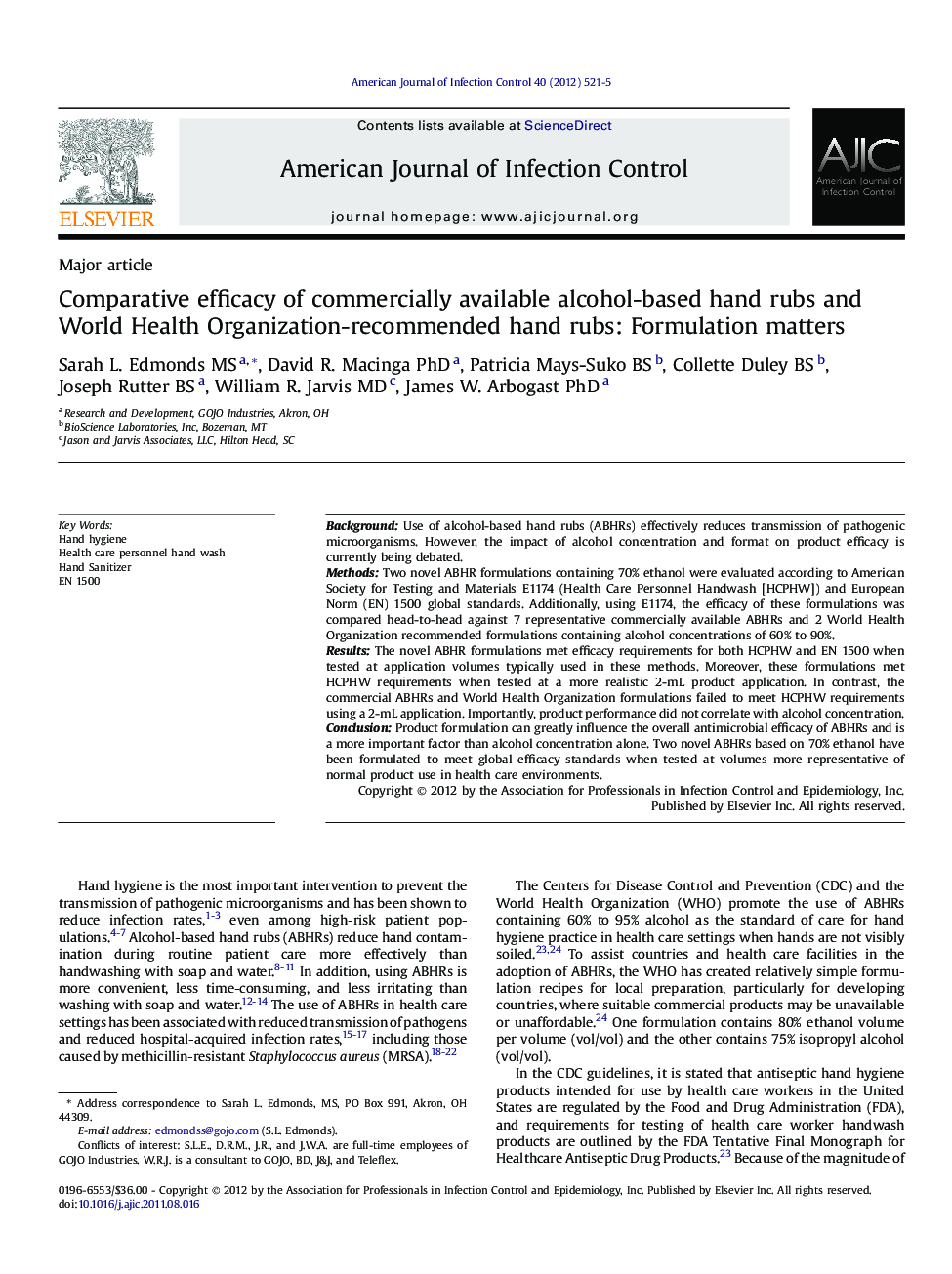| Article ID | Journal | Published Year | Pages | File Type |
|---|---|---|---|---|
| 2637966 | American Journal of Infection Control | 2012 | 5 Pages |
BackgroundUse of alcohol-based hand rubs (ABHRs) effectively reduces transmission of pathogenic microorganisms. However, the impact of alcohol concentration and format on product efficacy is currently being debated.MethodsTwo novel ABHR formulations containing 70% ethanol were evaluated according to American Society for Testing and Materials E1174 (Health Care Personnel Handwash [HCPHW]) and European Norm (EN) 1500 global standards. Additionally, using E1174, the efficacy of these formulations was compared head-to-head against 7 representative commercially available ABHRs and 2 World Health Organization recommended formulations containing alcohol concentrations of 60% to 90%.ResultsThe novel ABHR formulations met efficacy requirements for both HCPHW and EN 1500 when tested at application volumes typically used in these methods. Moreover, these formulations met HCPHW requirements when tested at a more realistic 2-mL product application. In contrast, the commercial ABHRs and World Health Organization formulations failed to meet HCPHW requirements using a 2-mL application. Importantly, product performance did not correlate with alcohol concentration.ConclusionProduct formulation can greatly influence the overall antimicrobial efficacy of ABHRs and is a more important factor than alcohol concentration alone. Two novel ABHRs based on 70% ethanol have been formulated to meet global efficacy standards when tested at volumes more representative of normal product use in health care environments.
